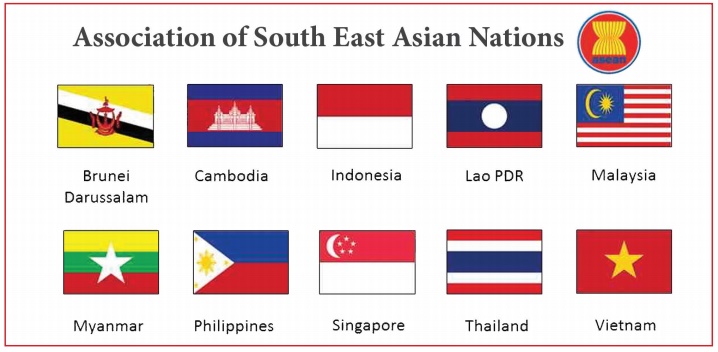International Economic Organisations - Association of South East Asian Nations (ASEAN) | 12th Economics : Chapter 8 : International Economic Organisations
Chapter: 12th Economics : Chapter 8 : International Economic Organisations
Association of South East Asian Nations (ASEAN)
Association of South East Asian Nations (ASEAN)
ASEAN was established on 8 August 1967 in Bangkok by the five
original member countries: Indonesia, Malaysia, Philippines, Singapore
and Thailand. Later Brunei Darussalam, Vietnam, Laos and
Myanmar and Cambodia joined. Besides ten members of the ASEAN, there are six
“dialogue partners” which have been participating in its deliberations. They
are China, Japan, India, South Korea, New Zealand and Australia. The ASEAN
nations are expected to benefit from the FTA as it will reduce tariff and non-
tariff barriers. The common historical and cultural background made the member
countries to maintain their unity and solidarity by establishing a trade block.
Foreign trade is the life blood of the ASEAN countries following globalization
and prudent macroeconomic policies. The ASEAN Summit of the Heads of
Governments of member countries is the highest forum for ASEAN cooperation. Its
meetings are held once in three years. The ASEAN \ministerial meeting of
Foreign Ministers is the next highest decision-making body.
India’s relationship with ASEAN started in 1992 when India became
a “sectoral dialogue partner” of ASEAN. The geographic proximity of ASEAN
countries to India facilitates faster exports and lower freight costs.

1. Objectives of ASEAN
The ASEAN Declaration states the aims and purposes of the
Association as:
(i) To accelerate the economic growth, social progress and cultural
development in the region;
(ii) To promote regional peace and stability and adherence to the
principles of the United Nations Charter;
(iii) To promote cooperation among the members of ASEAN through
the exchange of knowledge and experience in the field of public sector
auditing.
(iv) To provide a conducive environment and facilities for
research, training, and education among the members
(v) To serve as a centre of information and as an ASEAN link with
other international organizations.
2. Functions of the ASEAN
(i) It facilitates free movement of goods, services and
investments within ASEAN by creating a single regional market like the European
Union.
(ii) It provides free access to the marketers of one member
country to the markets of all other member countries, thus fostering growth in
the region.
(iii) It improves business competitiveness between businesses from
different countries and also narrow developmental gaps between member
countries.
(iv) It paves way for market and investment opportunities for the
member nations.
(v) It fosters co-operations in many areas including industry and
trade.
All the ASEAN economies experienced a great economic crisis in the
year 1997.
Related Topics